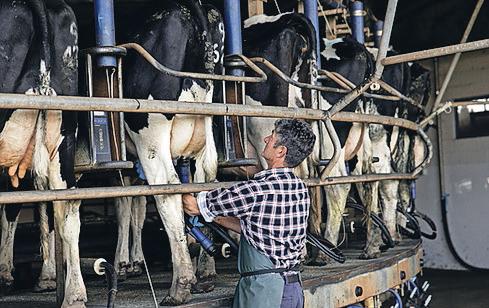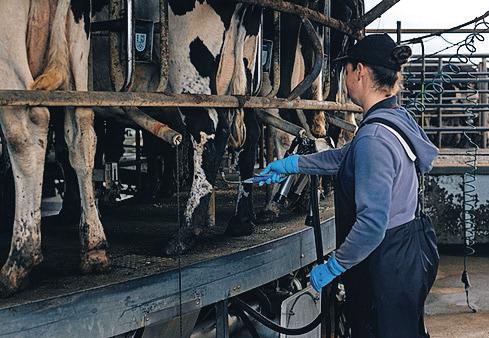
2 minute read
Manage mastitis in lactation
DESPITE OUR very best intentions to limit the number of cows with clinical mastitis and limit the spread of mastitis in our herds, an inevitable fact is we will never eliminate mastitis completely.
The past few months have certainly been challenging with all the wet, muddy and cold weather testing even the best mastitis plans.
Managing milk quality begins with understanding the risk factors on your farm and knowing what tools you have at your disposal to mitigate those risks.
A great place to start is Dairy Australia’s Milking Mastitis Management program.
This is the revamped working of the Cups On Cups Off workshop that has been running for a number of years. This course covers several key areas.
Understanding mastitis infection
Some bacteria in the cow’s environment can invade the teat and cause inflammation of the udder (aka mastitis). The number of white blood cells in the milk increase as the cow fights the mastitis infection.
When stripping the quarter if there are clots and a cheesy appearance for more than three squirts, the infection is called ‘clinical mastitis’.
Signs of clinical mastitis may range from mild with flecks and/or discolouration of milk; moderate with swollen quarters; to severe cases where the infection spreads from the udder to the cow causing signs of sickness (reduced appetite, rumen tucked, eyes sunken, head/ears drooping or cow sitting down not grazing in paddock).
When the infection only causes an increase in the cell count but no change in the appearance of the milk, the infection is known as ‘subclinical mastitis’.
Both types of infection will cause an increase in Somatic Cell Count (SCC) and decrease the volume of milk a cow produces. The SCC of an infected quarter can be 250,000 to many million cells per ml.
Treatment of mastitis
The cost to treat a case of mastitis is estimated at $400 per cow in 2023. The key to any treatment program is understanding if you have an issue.
Dairy Australia’s triggers for action for mastitis control are:
If you have more than five per cent of cows affected by clinical mastitis in the first 14 days after calving.
More than two per cent of cows affected by clinical mastitis in each month of lactation.

Appropriate antibiotic and anti-inflammatory treatment are most likely to be of benefit in cows with a newly acquired mastitis infection during lactation.
If the cow has a previous history of mastitis infection or the infection remains untreated for a while, then the chance of clearing the infection with lactating cow antibiotics is reduced.
Hence the merit of treating the cow must be considered against the type and level of infection, time taken to identify the issue and using her health, production and fertility records.
A written treatment protocol ensures consistency in treatment and reduces the risk of antibiotic residues reaching the vat.
Eighty per cent of residues occur as a result of not separating treated cows from the herd and off-label use of medication.
Things that should be written down in mastitis treatment protocol include:
When a cow needs treatment.
What treatments to be given and how to be given.
How to administer.
How to mark the cow and separate from main milking herd.
How and what to record.
When a cow should be culled.
Collecting a useful milk sample
A sample needs to be collected from the affected quarter before the cow receives antibiotic treatment.
Wearing clean disposable gloves and thoroughly cleaning the teat end with 70 per cent methylated spirits before collecting a milk sample will reduce the chance of contaminating the milk sample with dirt or dung. Contaminated milk samples may obscure identification of the bacteria causing the mastitis infection.







